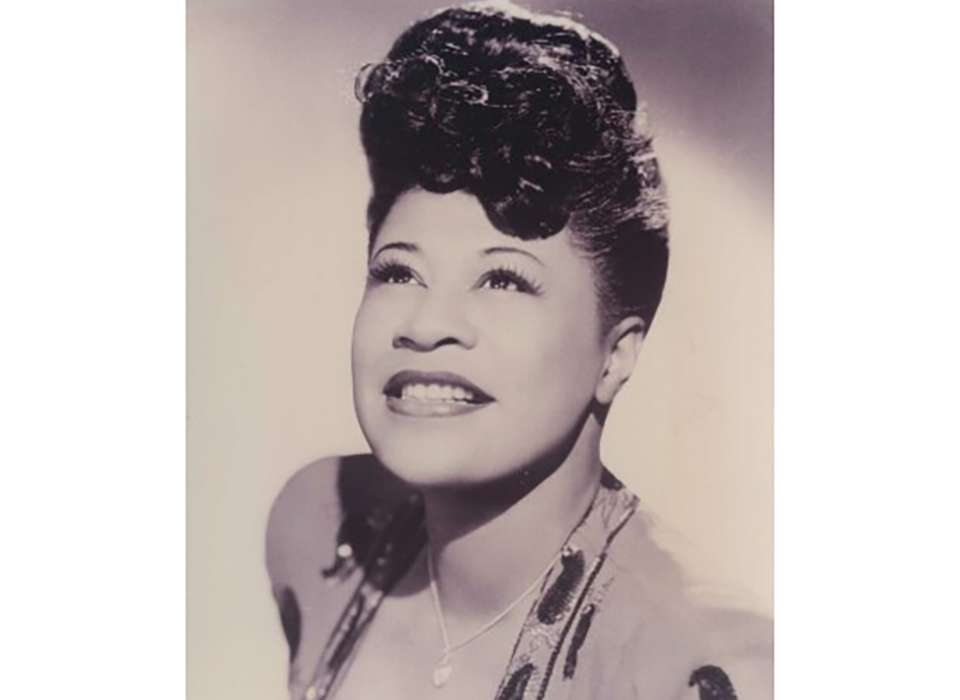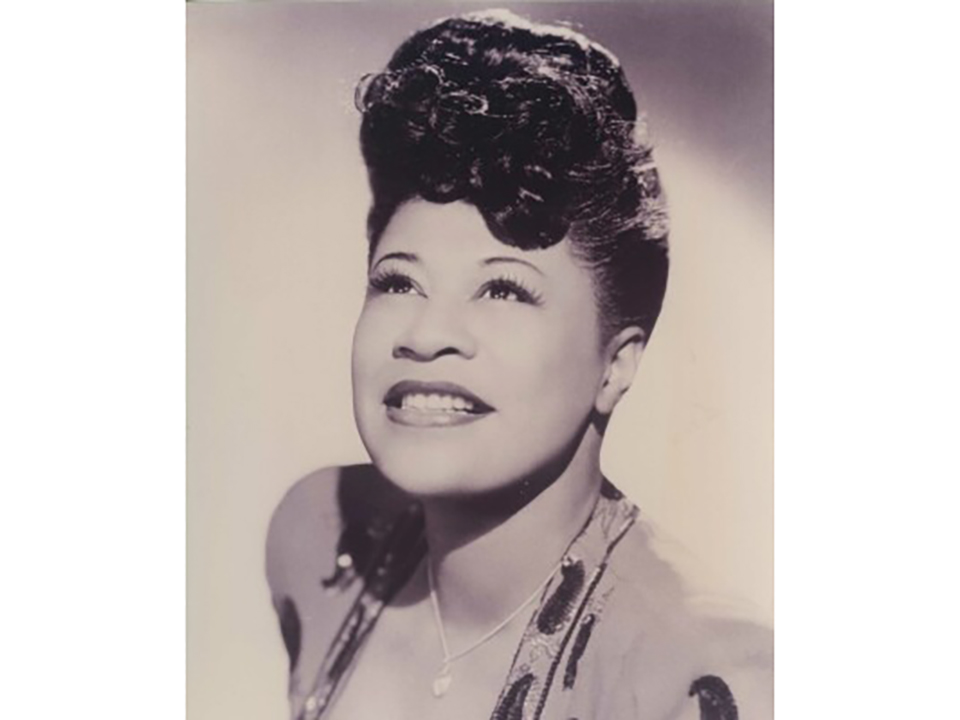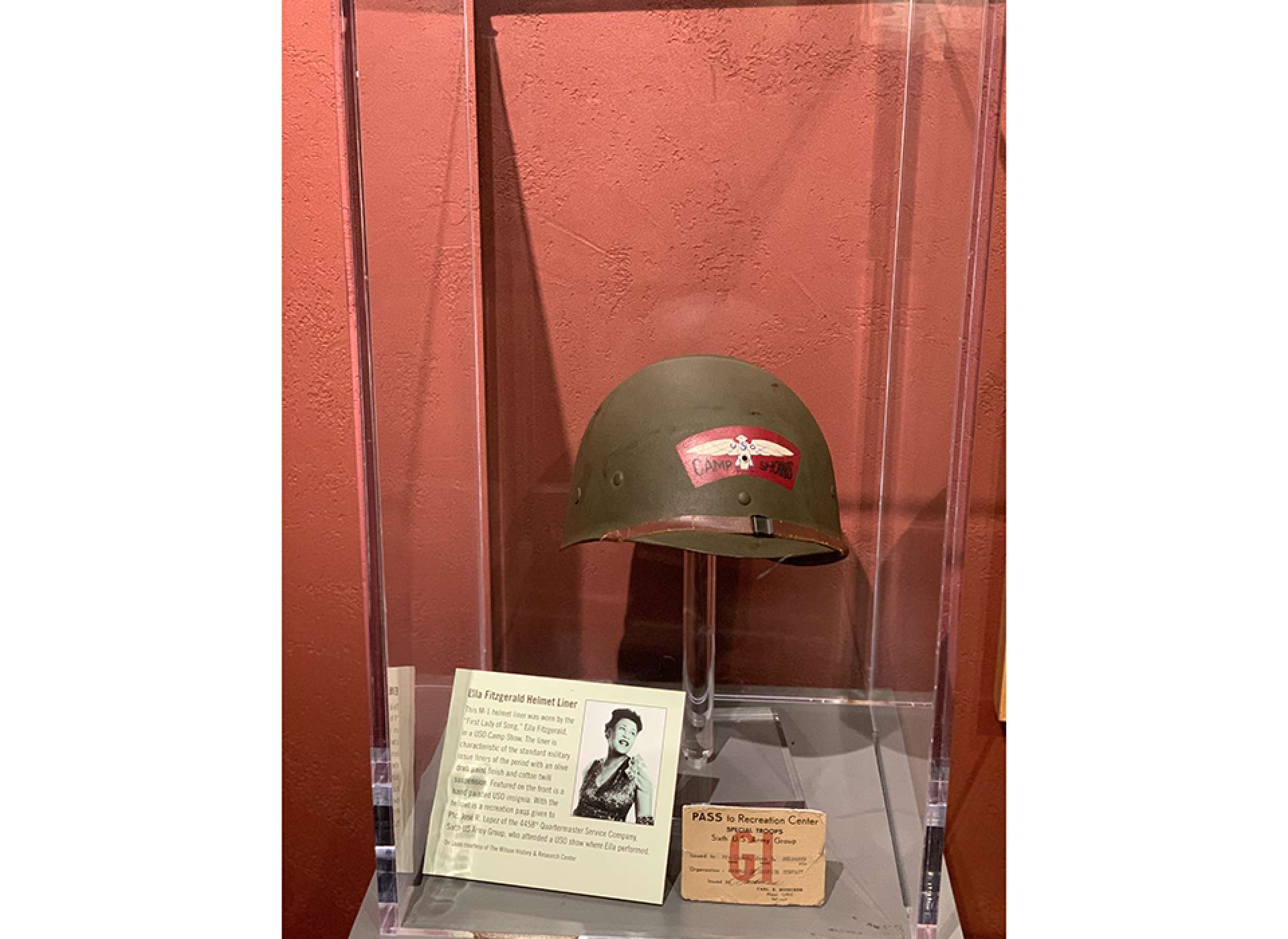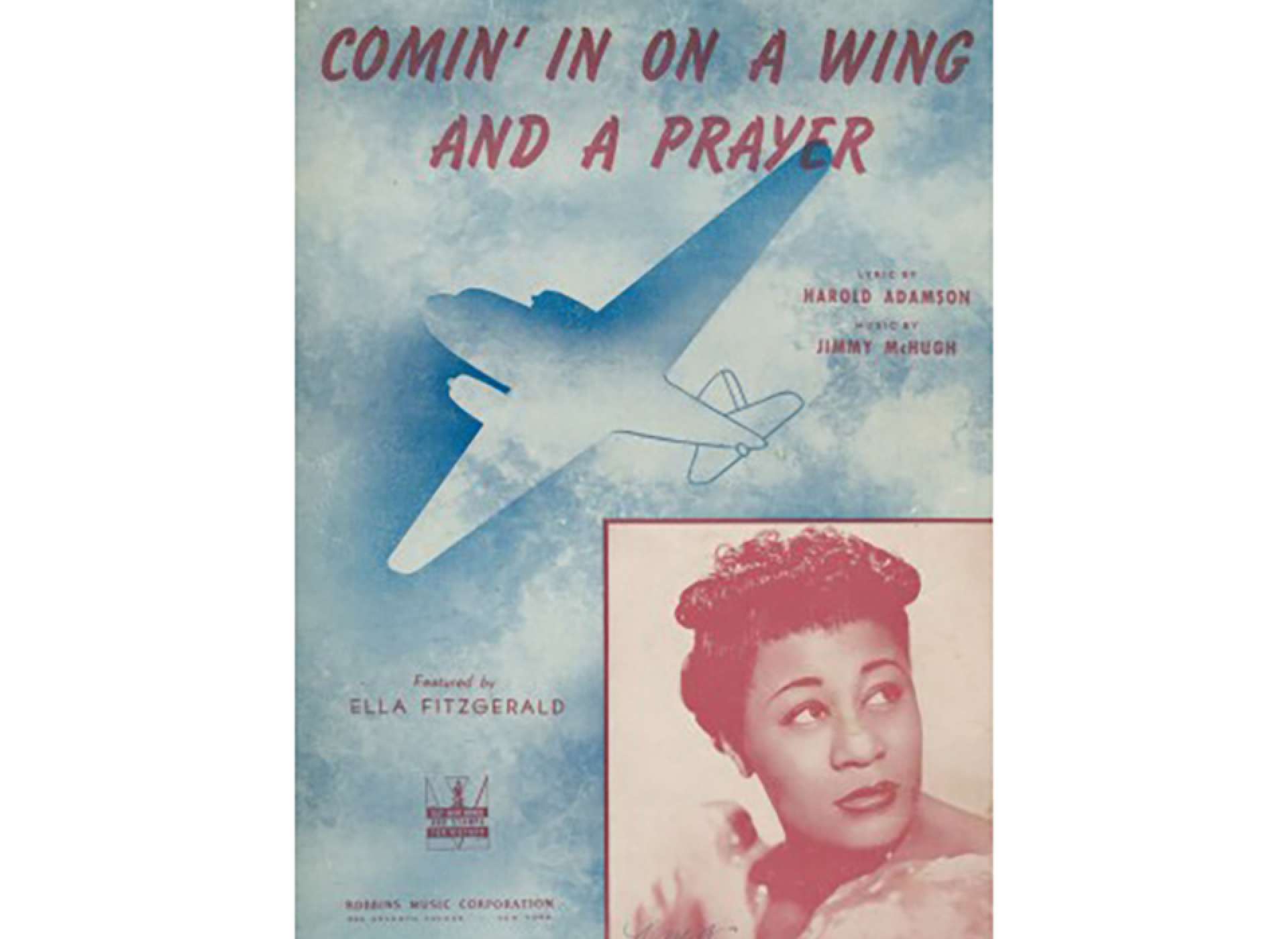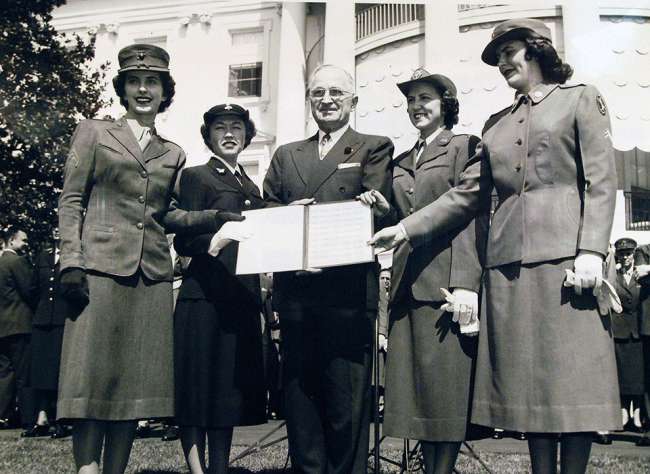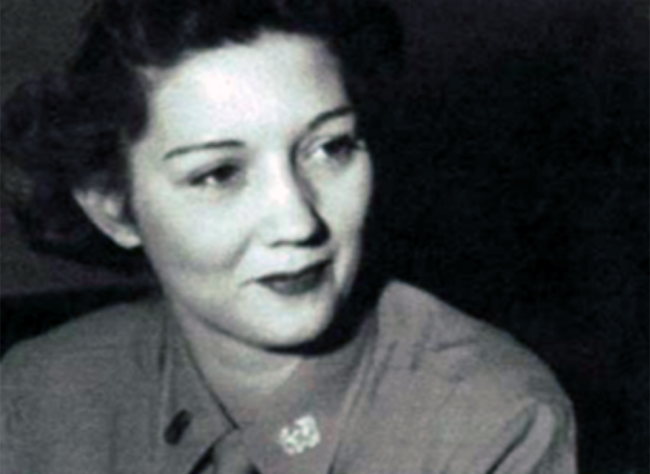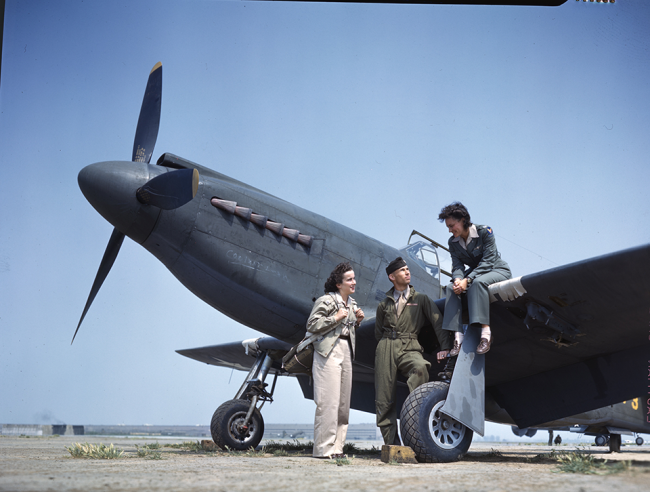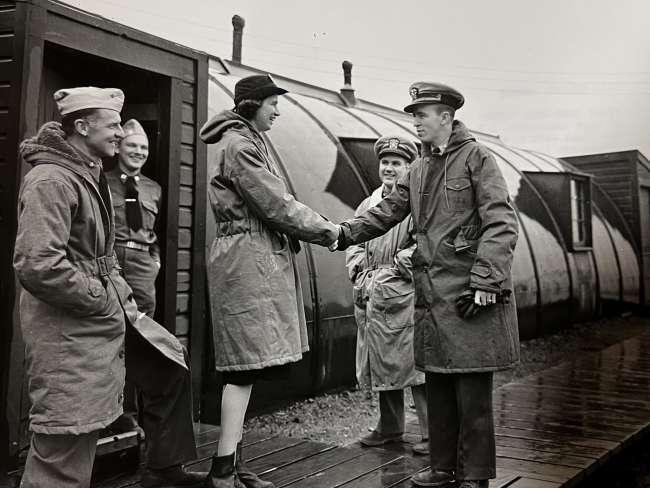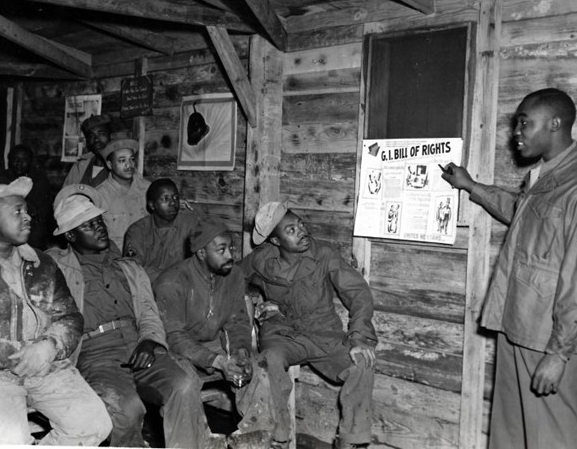Legendary jazz singer Ella Fitzgerald (April 25, 1917 – June 15, 1996) became known as the “First Lady of Song,” “Queen of Jazz,” and “Lady Ella” for her singular tone. Ella Fitzgerald’s voice featured prominently on the 1940s musical soundtrack. She was one of the superstars of the era and an all-time musical great. As Bing Crosby—a pretty good singer himself—once said: “Man, woman or child, Ella is the greatest of them all.
"The only thing better than singing is more singing."
Ella Fitzgerald
Fitzgerald was born April 25, 1917 in Newport News, Virginia. Her youth was one of struggle and loss. She never knew her father and her mother died when she was only 15. A rudderless Ella struggled in school and at home and experienced a period of delinquency and homelessness. But just two years after losing her mother, in 1934 she began to appear on stage, competing in Amateur Nights at the Apollo Theater in Harlem. She was so successful that she was soon hired by drummer and bandleader Chick Webb to travel with his band. The pay was $12.50 a week.
While performing with Webb, Fitzgerald made several important recordings with Decca Records, whose talent dominated the jukebox offerings with the likes of the Andrews Sisters and Bing Crosby. One of the recordings, Fitzgerald’s swinging version of the nursery rhyme “A-Tisket, A-Tasket,” hit number one on the charts and propelled her to fame in 1938. The album sold over a million copies. With Webb’s death in 1939, when Fitzgerald was just 22, the band’s billing changed to “Ella Fitzgerald and her Famous Orchestra” to reflect her draw as a star. Her popularity with crowds was immense. At the end of a performance at the New Rhythm Club in New Orleans in June 1940, an autograph-hungry audience nearly ripped Fitzgerald’s clothes off. Fitzgerald’s early recordings with Webb also had international reach. In August 1941, hundreds of requested copies of “The Muffin Man” were shipped to London as requested to help bolster the spirits of British citizens spending long hours in public bomb shelters during the Blitz.
But Fitzgerald’s popularity was sometimes hard to classify. Her style and appearance often fell outside of traditionally successful norms. The orchestra disbanded in 1941, and Ella began to perform with smaller vocal groups, including the Three Keys. She also started to incorporate different techniques and tunes, calling on bebop timing and scat vocals, in her performances and recordings, and straying beyond what had been her most popular style, the novelty song. Her instrument, her voice, which one critic called “actually thrilling,” began to take center stage.
With the US entry in the war, many performers contributed to the war effort by volunteering their time and talent. Just entering the peak of her career, Fitzgerald continued a rigorous touring schedule across the country during the war years, often sharing a bill with the Ink Spots. But she still performed large and small shows along the way for those in service. Fitzgerald, like countless others, often operated through the United Service Organizations (USO).
The USO, formed in April 1941 with the aim of bolstering troop morale and providing a “home away from home” for those in service, was the main force behind the entertainment and recreational efforts during World War II. The Camp Shows Division of the USO was formed in October 1941 to bring live entertainment to troops. The division’s output was tremendous; from 1941 to 1947, more than 7,000 performers put on 428,521 shows of all kinds.
Many famous African American performers, like Ella Fitzgerald and Lena Horne, suffered discrimination and segregation even while volunteering to entertain to support the war effort. Although official USO policy forbade discrimination on the basis of creed or race, most USO centers were segregated during World War II because the USO was unwilling to integrate clubs if local communities opposed integration. As a result, the national USO and local African American communities created 375 separate USO clubs for African American servicemen. Of 3,000 total USO clubs, 109 of the clubs staffed by white volunteers admitted African Americans, but only sometimes on nights when white servicemen were barred from entry.
Racist policies and practices led some black entertainers to distance themselves from official USO performances, while still devoting themselves to the overall cause by entertaining. Some performers, like Lena Horne, performed solely at camps and facilities for the more than 1.2 million African American troops serving in the segregated Armed Forces fighting tyranny abroad while living under discrimination at home.
Restrictions on travel and lack of accommodations were difficult for all during the war, but were a particular hardship on African Americans, who were confined to blacks-only cars on trains and prohibited from many hotels. Once on a crowded train passing through the Washington, D.C. area, Fitzgerald took a seat in a whites-only train car after having stood for hours unable to find a seat in the packed blacks-only car. The conductor tried to remove her from the car, but a group of white sailors intervened and insisted she sit with them. Even under these circumstances, Ella kept a busy tour and travel schedule.
A review of a Fitzgerald appearance at Governors Island, New York on February 25, 1942 reads:
“A ferryboat full of jive unloaded at Governor’s Island, Wednesday, when Ella Fitzgerald, the golden girl of the dance business, took her famous orchestra for a USO-Camp Show volunteer playdate at Fort Jay. The Tisket-Tasket Gal and her solid sending hand of Harlem rhythm men are another of the nation’s top dance and radio bands contributing their services to USO-Camp Shows who book them into camps and naval stations all over the country, where they play early evening performances free for Uncle Sam’s service men.”
In June 1942, Ella Fitzgerald was billed as a “special attraction” along with Lena Horne and the eight star-studded big bands in the lineup at a USO benefit dance at the Golden Gate Ballroom in Harlem, New York. She had just turned 24. During this period, Fitzgerald was also a popular performer on the radio show Jubilee, broadcast by the Armed Forces Radio Network (AFRN) from 1942-1953. This show, one of over 100 shows sent overseas by the AFRN, featured African American musicians and singers and was intended to be aimed at black listeners in the US Armed Forces. Because the show featured many unique and unknown acts in addition to stars like Fitzgerald, the show’s recordings are the only traces of some of the broadcast’s performers.
On May 31, 1944, Fitzgerald had a special honor when she opened the new outdoor amphitheater at the northern edge of Tuskegee Army Air Field. The air field was a full-scale military base, and was the US Army Air Forces training site for the ground-breaking Tuskegee Airmen, roughly 1,000 African American aviators.
One of the most significant artifacts remaining from the jazz heroine’s career as a WWII entertainer is the M-1 helmet liner worn by Fitzgerald at a USO performance for troops. The helmet is displayed at The National WWII Museum in BB’s Stage Door Canteen as part of a tribute to American entertainers who donated their time and talent to help out with the war effort and provide enjoyment for those in service. The Museum’s collection contains items related to Ella’s life and works including sheet music, concert programs, and music albums.
-

Helmet liner worn by Fitzgerald on display in BB’s Stage Door Canteen at The National WWII Museum, Gift of the Wilson History and Research Center, 2013.085.
-

WWII-era sheet music featuring Fitzgerald, Gift in Memory of Miss Ella Fitzgerald from the Estate of Ella Fitzgerald, Los Angeles, California.
Ella Fitzgerald left behind an astounding body of work, with more than 200 albums and 2,000 recorded songs. She earned 13 Grammy awards, influenced countless artists, and touched many lives with her civil rights advocacy. Fitzgerald’s charity work on behalf of children was spurred on by World War II. Shortly after the war, Fitzgerald funded a spot in a home for a war orphan in Naples. Throughout her life, she remained a champion of children, inspired by personal tragedy to help orphans and disadvantaged children. In 1993, the singer founded the Ella Fitzgerald Charitable Foundation. The Foundation is dedicated “to use the fruits of her success to help people of all races, cultures and beliefs… Ella hoped to make their lives more rewarding, and she wanted to foster a love of reading, as well as a love of music. In addition, she hoped to provide assistance to the at-risk and disadvantaged members of our communities—assistance that would enable them to achieve a better quality of life.”
Kim Guise
Kimberly Guise holds a BA in German and Judaic Studies from the University of Massachusetts Amherst. She also studied at the Universität Freiburg in Germany and holds a masters in Library and Information Science (MLIS) from Louisiana State University. Kim is fluent in German, reads Yiddish, and specializes in the American prisoner-of-war experience in World War II.
Cite this article:
MLA Citation:
APA Citation:
Chicago Style Citation:
